How to use acrylic paints?
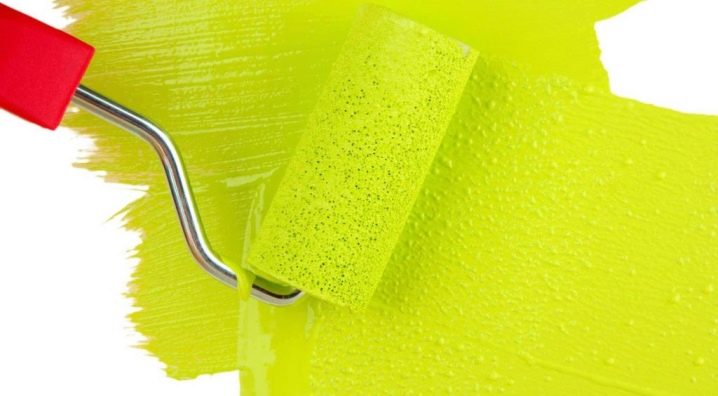
No matter how hard chemists and technologists try to create new types of paints and varnishes, people's commitment to the use of familiar materials is inevitable. But even the most traditional solutions should be applied wisely, carefully observing the technology and basic requirements.
Application
Acrylic based paints are recommended for walls and ceilings in living rooms. In addition to interior work, they can be used in artistic processing of wood and other surfaces. Automotive workshops and private craftsmen often use spray cans with these compositions to give the desired color to metal or plastic parts. Acrylic interior paint is valued for its perfect texture and a wide variety of shades.
In addition, it is quite easy to apply, which is appreciated by very busy people and professional repairmen.
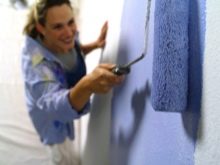


Compositions based on acrylic resins also help in various arts and crafts., with their help it is easy to make painting of high quality furniture. Please note that it will be necessary to carefully prepare the wood, and an interesting-looking shine appears only at a strictly defined angle of view, with certain lighting characteristics.
After applying the rough layer, you can either paint the table, cabinet, or process them using decoupage technique.



Acrylic paints can also be used on plaster, this solution helps to protect the main finishing material from the harmful effects of water. Thanks to this, it can be used even in bathrooms, where the plaster itself does not show itself from the best side. You can paint it with both matte and glossy varieties of acrylic paints, both of them fit equally well on walls and tops of rooms. That is, you still free yourself from worrying about the decoration of the ceiling, from the painful choice of the best option for it.



The original use of acrylic paint is its use for manicure; The attention of specialists was attracted by a wide variety of colors, and the clients themselves appreciate the ease of work and the ability to independently perform all the necessary manipulations. Other important advantages of such dyes are the absence of toxic components, the ease of correction after application, the ability to paint both biological and synthetic nails.
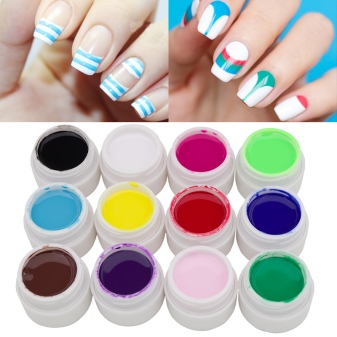
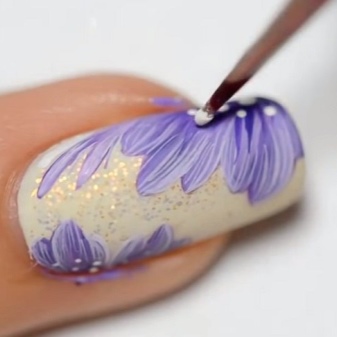
What paint can I apply to?
Building paints, including acrylic paints, are not always used over completely clean surfaces. Often there is a situation when the base has already been painted earlier. It is quite easy to apply acrylic coating to oil paint; to increase the adhesion between them, it is better to sand the wall and treat it with a primer.
First, you should check whether the original paint itself is firmly held, at the slightest detachment it will be more correct to first eliminate the defect or completely remove the paint layer, and only then start work.
It is permissible to apply acrylic compositions to water-based paint only in the absence of the slightest deformations, especially delamination and swelling places. In case of a pronounced violation of the integrity of the layer, it would be more correct to completely remove it, and then perform a new color from scratch.


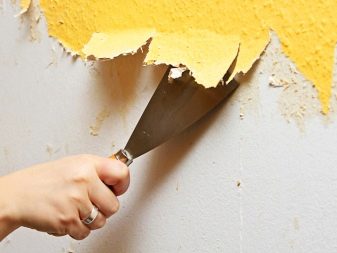

If earlier alkyd paint was taken to paint the same surface, it is unacceptable to use two-component acrylic compositions when repainting; one-component coloring agents, including aerosol ones, can be used. But in this case, it is required to spray the finishing layer at most half an hour after applying the alkyd mixtures.
The question of whether it is possible to overlap with acrylic latex paint, and whether there is no risk, is solvable. As in other cases, in the absence of obvious defects or their insignificance, this combination does not pose a danger. When the initial layer is enamel, it all depends on the quality of the acrylic paint, on how strong adhesion it has.
A test painting of a small area of the surface, preferably invisible to observers, helps to resolve all doubts.

Precautionary measures
Regardless of the quality of building paints, all of them can harm a person, if the composition is used incorrectly, violate the technology of work. Vapors of any dye are poisonous; certain substances that make up their composition are capable of provoking an allergic attack of various strengths, irritate the skin and sometimes even lead to burns.
Whenever possible, ventilate the room that is being paintedto avoid excessive concentration of hazardous substances. And even if windows are regularly opened, wearing a respirator or at least a gauze bandage is fully justified.
In addition to them, always use rubber gloves, thick clothing, and most importantly, carefully choose the composition of the paint, preferring products from well-known manufacturers.

How to mix?
In addition to safety considerations, people are naturally interested in the combination of colors of acrylic paint. The fact is that completely original and unique-looking tones are often too expensive. The solution is to mix parts of the base palette with each other. To get absolutely any color, just seven basic tones are enough; so, to make olive paint, you need to combine yellow and green colors.
You can choose the exact proportions only on your own experience, developing visual perception and spatial thinking, otherwise you will not be able to understand exactly how the created paint will look on the wall or on the ceiling.

In order to avoid mistakes, if you do not yet have the necessary experience, it is worth gradually introducing the color scheme, and after each portion evaluate the result obtained on a surface that you do not need. But in this case, haste is contraindicated, wait until the control smears have completely hardened in order to know exactly what the finishing color will be.
Even the most detailed and carefully compiled tables of color combinations will not help replace personal experience and observation.


How to paint: a detailed master class
When the mixture is ready, it is very important to apply it correctly, otherwise all the effort and information gathered will be wasted. The technique of applying acrylic paint with a spray gun is not too complicated, but you will have to strictly follow the order of work. As with the usual painting option, all objects that cannot be transferred, as well as all architectural elements that cannot be painted, must be covered with polyethylene, driving in the staples with a construction stapler.


You can work only with normal viscosity of the composition, which should completely flow out of the test watering can in 26-28 seconds. If the dye is too thick, it must be further diluted with water.
Then the compressor is tuned, focusing on the required performance. A test run is required, with it the spray gun is brought closer to the wall surface by 0.4-0.5 m and see if there are significant streaks. Once you find them, you must reduce the flow rate of the dye mixture.


For aspiring artists, it is best to use acrylic paints in tubes.Note that it is good to work with such compositions with brushes of both natural and artificial nature; it is easy to use a palette knife for drawing with them, and if you dilute the dye using a special technology, you can also use an airbrush. Please note that the paint will dry quickly, and remove from the tube as much of it as you can apply in the next few seconds.
If the palette is dry, you will additionally need a spray bottle to moisten the painted surface.




Still, painters often use water-based paints. They should carefully read the instructions from the manufacturers, this is quite enough to achieve a good result.
The coloring composition on gel polish is used to create a manicure; as usual, the staining itself is preceded by the removal of the cuticle, filing the nails and degreasing the surface. The base is dried under ultraviolet rays for 120 seconds, then the selected decorative preparation is applied.



Returning to the use of acrylic paints in construction and renovation, we need to say a little about such a frequent task as painting wood carvings. Mixing with the color scheme is carried out according to the general rules, and the surface preparation for finishing is carried out by impregnating it with a yellow-brown stain. Be sure to make three different compositions of the stain, each subsequent one will be lighter than the previous mixture. Then carefully, using a brush or airbrush, paint over all the small details.
The main requirement in this case is not to rush, because the cost of a mistake is too high.



Surface preparation
Painting gives a good result, and the created layer looks attractive only if, along with the use of good paint, the requirements for material preparation are met. Different coatings should be prepared in a special way, but a close inspection is always the first step. A metal spatula will help to make sure that the old paint layer is really strong. If it does not remove the old coating, it will have to be removed, sometimes you have to use a grinder with special attachments.
Important: sandpaper is ineffective in this case.


To expose the original material, and the paint then lay flat, it will take a long time to grindand a mass of dust appears. Do not start work without wearing a gauze bandage, or better - a respirator. Each nail, other fasteners must be removed from doors, walls and other surfaces, if this is not possible, it is immersed as much as possible in the material. Be sure to treat all rusty fasteners with anti-corrosion cleaner.
It is quite possible to apply acrylic paint on concrete, but first you have to sand it properly, since the surface itself is rough to the touch.
For your information: only completely dry concrete can be painted.



If you have to brush on plywood, you need to remove all dust and sawdust from it. As in the previous case, the surface must be well dried, otherwise there is a great risk that the sheet will warp. Cheap varieties are not only polished, but always sanded.
It so happens that it is necessary to apply acrylic paint on plastic things. Plastic products must be washed and degreased, and contamination must be evaporated in a special chamber.
If it was necessary to paint the chipboard, or apply acrylic paint on top of the fiberboard, first all cracks, scratches and chips are eliminated, the seams are additionally sealed. As always, get rid of the slightest grease, crusts and stains.



And before painting over whitewash, it is checked by scratching it specially to determine its strength. If you notice damage or find the fineness of the coating, it is better to abandon your idea.
Styrofoam is painted well with modern paints; but it will be necessary, if this is not a new material, but previously installed blocks and decorative items, to remove dust, cobwebs and other pollution.Any technological seam, any joint between the blocks is carefully putty, if necessary, sealed with special mixtures. It is recommended to paint the foam in two or three steps.

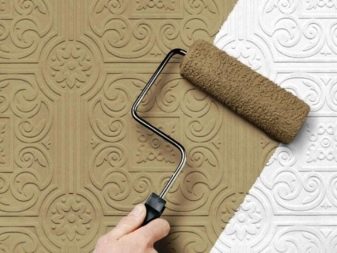
Important: it is impossible to paint hot radiators in any case, this not only adversely affects the properties of the coating, but is also fraught with burns. The surface is prepared in the same way as in other cases when working on metal or plastic.


Painting with acrylics on brick is a special case. The main material is carefully treated with antiseptic preparations to avoid the occurrence of fungal colonies.
It should be noted that brickwork can be painted no earlier than 12 months after the end of construction or repair work.


Applying acrylic paint to glass is perfectly acceptable. But first, the required product is washed and cleaned (fat is removed). After washing, the remaining moisture is removed with a clean, dry cloth, without relying on natural evaporation.


The preparation for coloring the wallpaper concludes our review. The surface relief is inversely proportional to the suitable pile size of the roller used. The floor covering is protected with cardboard, hardboard; protection by film coatings of wood for a long time is undesirable. The baseboard and platband will be saved by masking tape.
To paint the surface without streaks, it is enough to follow all the above rules and nuances.

Primer
It is unacceptable to prime a wooden street wall with water-based products, only an oil substance is suitable. We recommend using soil only from well-known manufacturers - its price is fully justified.

Tools and materials
A good deal of success with acrylic paints depends on the tool used. One roller will not work, at least two are required - with a shortened and elongated or telescopic handle.
In addition to these devices, the basic set will necessarily include several spatulas that differ in length, a wide film and a painting tape.
A spray gun is required only for work on a large area.


Dyeing
Wooden surfaces are coated with acrylic paint horizontally. The wall, facade or ceiling, as well as the floor, are painted from the corner. When you need to create a layer of paint on wood used in furniture or decorative objects, paint from one edge to the other.
Convenience of sprayers - don't forget to drive them carefully, at the same distance. Acrylic paint dries well, and to dry it quickly, faster than usual, you can apply paint with rollers in a thin layer.
If you do not have professional painting experience, it is not recommended to use driers.

What varnish to cover?
It depends on the type of protected products - wood is covered with furniture varnishes, natural parquet floors, garden furniture with yachts. Oil formulations work great when finishing wood, but they take too long to dry. Alkyd varnish wears out less and gets less wet, dries faster. Acrylic serves as long as the room's microclimate allows.

For more information about the types and applications of the spray gun, see the following video













The comment was sent successfully.